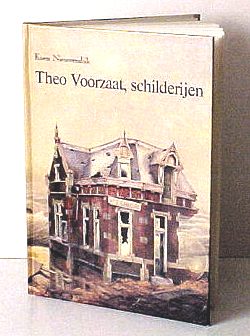INTRODUCTION
One of the problems in the Western world is the question what is art and what is not. Moreover for the majority of Westerners the usefulness of art is problematic and if someone likes something, how does he explain this to those who are indifferent to it. The great stylistic variety in the visual arts does not simplify matters. Not only are large groups of people occupied with the burning question wether art is indispensible, but within the world of art itself the admirers of the various movements are almost at war with one another. One group criticizes the absurdity and vacuity of what the other group experiences as the height of sensory pleasure and spiritual delight, although in reality the discussion is never so rational. Whether or not the arguments used make sense, they will never bring about any change in the entrenched opinions of the opposite party. However, before you get the impression that I am trying to show off my learning: I, like my fellow men, am limited and shortsighted, and only by rational thinking have I acquired a more tolerant attitude.
Understanding everything is dull, so is liking everything. The very contrasts form the soil on which the blissful sensation of recognition flourishes. To which field the recognition relates to is of no importance whatsoever. An absolute right cannot be derived from it, even the idea of art serving a purpose is open to question. In good English this is called: The wish is father to the thought. In this sense it is amusing to realise that modern realism has a number of advantages while it is abused by the cultural powers that be, it is not being hampered by high expectations of radical changes in attitude and social upheavel. It can, therefor, lay claim to greater effectiveness.
Would it be justified to explain the revival of realism during the last few decades, keeping in mind that it has never really disappeared, as a growing need in artists to articulate emotions and convictions. Not only to show that they are there, but to work them out and bring them into the open. This is happening in several movements in the visual arts though with varying results in intelligibility: things are not always what they seem. The concept of subjectivity is the keyword there. The painter who works in a realistic way translates what he experiences consciously into a readable image. He manipulates reality, distorts it if necessary, intensifies or isolates certain elements and he fantasizes although this seems to contradict the literal meaning of the word realism. This way of expressing things may seem to be a continuation of an ageold tradition, which it is indeed from a technical point of view. With regard to content, however, modern realism has freed itself from a pattern of action and reaction which is prevalent in the visual arts today. In other words: the pendulum-like movement between formalism and antiformalism (Arnold Hauser, Social History of Art) can no longer serve as a model to determine the position of the modern realist.
The realistic way of painting is being used for all matters of things. The message can be more or less articulated, may appear in the form of a protest, or present itself as a welcome opportunity to temporarily escape the chaos of modern living. The means are now formalistic, then antiformalistic. Unlike many previous movements, such as Impressionism and Cubism to give some arbitrary examples, modern realism is a movement which is hard to define. The common denominator is obviously the idiom. While many trends in art are characterized by a relation between the way of thinking and the way of formalizing, modern realism does not know this duality. In Cubism the resistance of the illusion of a third dimension on the flat level of the painting is indissolubly linked to the cubistic way of painting. The premiss is supported by the work of art or vice versa. In modern realism this is different. In one and the same idiom the world is both romanticized and tarnished. While one painter strives for poetic exaltation, another is petrified in horrible alienation. It is both fleeing the naked truth, or call it longing for the quiet tranquillity of paradise lost, and a strong protest against hypocrisy and impending doom.
It is not inconceivable that in the near future several trends will crystallize, distinct from each other in subject and purpose. I am not saying that this is necessary, but studying art-history means taking cognizance of categories, trends, styles and so on and such a study should be projected on to the social structure of the moment. This will probably remain so. If we make a provisional distinction of the heterogeneous group of artists who together give shape to modern realism, then Voorzaat should be placed in the group that concentrates upon a way of thinking which is critical of society.
"Theo Voorzaat, schilderijen"
by Koen Nieuwendijk,
Galerie Lieve Hemel Editions
Amsterdam, 1985

(sold out)




